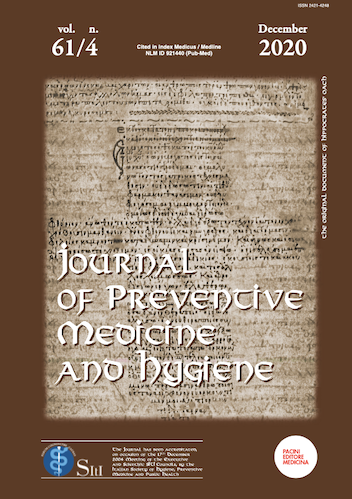Abstract
Introduction: Study aimed to identify factors associated with high body temperature in newborns while focusing on serious bacterial infections (SBIs).
Methods: A convenience sample of 54 newborns admitted to our hospital in Iran (March-July 2015) with rectal temperature >38°C (100.4°F) were examined for clinical signs, blood cultures, complete blood counts, platelets, ESR, CRP, renal function, chest/abdominal x-rays, spinal tap, and history of maternal infections.
Results: Newborns had either fever due to infections, or hyperthermia due to dehydration and/or extreme warm environment. Bacterial infections (37%) included: sepsis (15%) (coagulase-positive or coagulase-negative staphylococci, Enterobacter, Klebsiella, Escherichia coli), meningitis (13%), and 3.5% UTI, 3.5% pneumonia, 2% cellulitis, and 2% omphalitis. Degrees of dehydration experienced by 55.6% included 37% of cases associated with hyperthermia caused by warm clothing/environment, while in 18.6% dehydration was secondary to fever. Viral infections (11%) included upper respiratory infections, gastroenteritis, while in remaining 13% cause of high body temperature was unknown.
The group with SBIs had higher chance of having history of PROM (premature rupture of membrane) (p=0.023), positive CRP (p=0.041), and abnormal platelets count (p=0.021) comparing all others.
Conclusions: High body temperature in newborns needs careful evaluation to identify fever due to SBIs. In case of sepsis, antibiotics should cover prevalent bacteria including staphylococci and Enterobacter. Dehydration was prevalent among newborns with high body temperature due to hyperthermia or secondary to infections. To avoid hyperthermia, parents should know how to clothe their newborns appropriate for environmental temperature.
Newborns’ SBIs associated with positive CRP, abnormal platelet count, and maternal PROM.
References
[2] Greenhow TL, Hung YY, Herz AM. Changing Epidemiology of Bacteremia in Infants Aged 1 Week to 3 Months. Pediatrics. 2012;129(3):1.
[3] Baraf LJ. Management of fever without source in infants and children. Annals of Emergency Medicine. 2000;36(6):602-614. https://doi.org/10.1067/mem.2000.110820.
[4] Gleason C, Devaskar S. Avery's Diseases of the Newborn. 9th Ed. Elsevier 2012, Chapter 3. ISBN: 978-1-4377-0134-0.
[5] Bachur R. Nonresponders: Prolonged Fever Among Infants with Urinary Tract Infections. Pediatrics. 2000;105:5.
[6] Haque KN. Neonatal Sepsis in the Very Low Birth Weight Preterm Infants: Part 2: Review of Definition, Diagnosis and Management. Journal of Medical Sciences. 2010;3(1):11-27.
[7] Gianakaki M, Avanidi M, Chandanos K, Theodoraki M, Filippidis M. 148 Fever in Neonates in NICU. Pediatric Research. 2005;58:380. doi:10.1203/00006450-200508000-00177.
[8] Aleem S, Greenberg RG. When to Include a Lumbar Puncture in the Evaluation for Neonatal Sepsis. NeoReviews. 2019;20(3).
[9] Bolat F, Uslu S, Bülbül A, Cömert S, Can E, K›ray Bafl E, Güran O, Nuho¤lu A. Hospital acquired bloodstream infections in neonatal intensive care unit. Turkish Archives of Pediatrics. Published 2011. DOI: 10.4274/tpa.46.61.
[10] Ramesh YR. Platelet indices in neonatal sepsis: A review. World J Clin Infect Dis. 2017;7(1):6-10. DOI: 10.5495/wjcid.v7.i1.6.
[11] Klinger G, Levy I, Sirota L, Boyko V, Reichman B, Lerner-Geva L, Israel Neonatal Network. Epidemiology and risk factors for early onset sepsis among very-low-birthweight infants. Am J Obstet Gynecol. 2009;201(1):38.
[12] Schuchat A, Deaver-Robinson K, Plikaytis BD, Zangwill KM, Mohle-Boetani J, Wenger JD. Multistate case-control study of maternal risk factors for neonatal group B streptococcal disease. The Active Surveillance Study Group. Pediatr Infect Dis J. 1994;13(7):623-9.
[13] Gaudelus J. Fever in infants under the age of three months without sign of focal infection. Criteria of therapeutic decision. Presse Med. 1994;23(17):785-7.
[14] Galetto-Lacour A, Zamora SA, Gervaix A. Bedside Procalcitonin and C-Reactive Protein Tests in Children with Fever Without Localizing Signs of Infection Seen in a Referral Center. Pediatrics. 2003;112(5):1054-1060.
[15] Chiu CH, Lin TY. Fever in infants less than 3 months of age. Zhonghua Min Guo Xiao Er Ke Yi Xue Hui Za Zhi. 1994;35(4):273-9.
[16] Perlstein PH, Routine and Special Care. Part two: Physical Environment. Fanaroff A, Martin RJ, eds Neonatal-perinatal Medicine. St Louis: CV Mosby 1983; 255-312.
[17] Niehue T. The Febrile Child: Diagnosis and Treatment. Dtsch Arztebl Int. 2013;110(45):764-774. doi: [10.3238/arztebl.2013.0764].
[18] Weber MW, Herman J, Jaffar S, Usen S, et.al. Clinical predictors of bacterial meningitis in infants and young children in The Gambia. Tropical Medicine and International Health. 2002;7(9):722-731. https://doi.org/10.1046/j.1365-3156.2002.00926.x.
[19] Wu JH, Chen CY, Tsao PN, Hsieh WS, Chou HC. Neonatal Sepsis: A 6-Year Analysis in a Neonatal Care Unit in Taiwan. Pediatr Neonatol. 2009;50(3):88-95. doi: 10.1016/S1875-9572(09)60042-5.
[20] Jain NK, Jain VM, Maheshwari. Clinical Profile of Neonatal Sepsis. Kathmandu University Medical Journal. 2003;1(2):117-120.
[21] M.T. Montagna, G. Lovero, O. DE Giglio, R. Iatta, G. Caggiano, O. Montagna, N. Laforgia, and “AURORA” Project Group, Department of Biomedical Science and Human Oncology, Hygiene Section; Department of Gynecology, Obstetrics and Neonatology – Neonatology and Neonatology Intensive Care Section, University of Bari “Aldo Moro”, Italy. Invasive fungal infections in Neonatal Intensive Care Units of Southern Italy: a multicentre regional active surveillance (AURORA Project). J prev med hyg 2010;51(3):125-130. https://doi.org/10.15167/2421-4248/jpmh2010.51.3.226.

